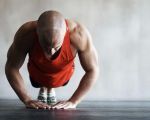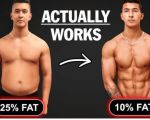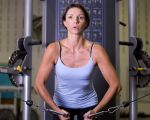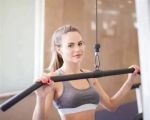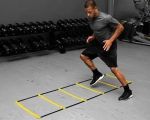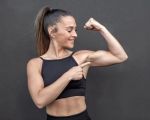Gym Workouts for Functional Fitness
Functional fitness is something I’ve become incredibly passionate about in recent years. As someone who leads a busy lifestyle, I wanted a workout routine that would not only help me build strength but also improve my everyday movements. I soon realized that traditional gym workouts weren’t always enough to help me feel as strong, mobile, and agile as I wanted to be. That’s when I began to dive into functional fitness, and I’ve been hooked ever since. If you’re looking to improve your functional fitness, whether for sports, daily activities, or injury prevention, I’ve compiled a list of the best gym workouts to help you achieve your goals.
1. What is Functional Fitness?
Before jumping into the best functional fitness exercises, it’s important to understand what functional fitness actually is. Functional fitness focuses on exercises that mimic real-life movements. These exercises help train your body to perform everyday activities more efficiently. From lifting groceries to getting up from the couch, functional fitness workouts aim to strengthen muscles that are used in common tasks. I’ve found that this type of training can also help with balance, coordination, flexibility, and endurance—all of which are vital for overall health.
1.1 The Benefits of Functional Fitness
When I first started incorporating functional fitness into my workout routine, I was amazed at how it improved my overall mobility and strength. The best part was that I didn’t just feel stronger in the gym but also in my day-to-day life. Activities like lifting my kids or carrying heavy boxes became easier. By focusing on exercises that mimic real-world movements, I felt more agile, and my risk of injury was reduced. Additionally, functional fitness is known to improve posture and boost cardiovascular health, which makes it a well-rounded approach to fitness.
2. Key Functional Fitness Exercises to Include in Your Gym Routine
Now that you have a basic understanding of functional fitness, let’s talk about the exercises that will help you get the most out of your workouts. Incorporating these exercises into your gym routine can increase your strength, mobility, and endurance, all while making you more capable in your everyday activities.
2.1 Squats
Squats are one of the most basic yet effective functional fitness exercises that I swear by. They target the quads, hamstrings, glutes, and core muscles—areas that are essential for nearly every movement we make. In addition to building strength in the lower body, squats also improve mobility and stability. I started with bodyweight squats and gradually added dumbbells to increase the intensity. As I progressed, I worked my way up to barbell squats. These are especially helpful for movements like standing up from a low chair or picking something up off the floor.
2.2 Deadlifts
Deadlifts are another powerhouse movement in functional fitness. These exercises target the entire posterior chain, including the hamstrings, glutes, lower back, and core. Not only do they help with strength and muscle-building, but deadlifts also improve posture and coordination. I’ve found that deadlifts are excellent for mimicking the motion of picking up heavy objects from the ground, which is something we all do daily. I started with lighter weights and slowly increased the load to challenge myself and avoid injury.
2.3 Lunges
Lunges are fantastic for building strength, stability, and balance. This exercise mimics movements like walking, climbing stairs, or lunging forward to grab something. I make sure to include both forward and reverse lunges in my workouts for a more comprehensive lower-body workout. To add more resistance, I incorporate dumbbells or a barbell. As a bonus, lunges also engage the core and help improve flexibility in the hips and legs, which is crucial for functional movement.
2.4 Push-ups
Push-ups are a staple in any functional fitness routine. They’re excellent for strengthening the chest, shoulders, triceps, and core. I started with modified push-ups and worked my way up to full push-ups as I gained strength. Push-ups not only improve upper body strength but also enhance stability and endurance. These are essential for performing many everyday tasks, from pushing a shopping cart to pushing open a heavy door.
2.5 Kettlebell Swings
Kettlebell swings are another fantastic functional exercise that targets multiple muscle groups, including the glutes, hamstrings, and core. This explosive movement mimics the action of bending down and standing up, which we do countless times throughout the day. I love incorporating kettlebell swings into my workout because they improve my cardiovascular health, strengthen my posterior chain, and engage my core. They’re also a great full-body workout that enhances power and endurance.
3. How to Structure Your Functional Fitness Workout
When structuring a functional fitness workout, I found that it’s important to focus on compound movements that engage multiple muscle groups at once. This not only maximizes the time you spend in the gym but also trains your body to perform real-life movements more efficiently. I typically create a workout that includes lower body exercises, upper body exercises, and core training. Here’s a sample workout I’ve used in the past:
3.1 Sample Functional Fitness Workout
- Warm-up: 5–10 minutes of light cardio (e.g., jogging, cycling, or rowing)
- Squats: 3 sets of 12 reps
- Deadlifts: 3 sets of 10 reps
- Lunges: 3 sets of 12 reps per leg
- Push-ups: 3 sets of 10 reps
- Kettlebell swings: 3 sets of 15 reps
- Core exercises: Planks (3 sets of 30 seconds), Russian Twists (3 sets of 20 reps)
- Cool-down: 5–10 minutes of stretching or yoga
This is just one example, but you can always modify the sets, reps, and weights based on your fitness level and goals. It’s important to challenge yourself but also listen to your body to avoid overtraining or injury.
4. Tips for Progressing in Your Functional Fitness Journey
As I continued with functional fitness, I realized that progress doesn’t always come from lifting heavier weights or doing more reps. Instead, improving functional fitness is all about consistency, proper form, and gradually increasing the difficulty of your workouts. Here are some tips that helped me along the way:
4.1 Focus on Form
One of the most important things I learned while training for functional fitness is the importance of form. Whether I was squatting, deadlifting, or doing push-ups, ensuring proper form helped me avoid injury and get the most out of each exercise. I recommend starting with lighter weights to perfect your form before adding more resistance. There are plenty of resources available online or trainers who can guide you in achieving the correct form.
4.2 Progress Gradually
Functional fitness is about improving your everyday strength, not just lifting heavy weights. As I got stronger, I gradually increased the intensity by adding more reps, sets, or weight. But I always made sure to listen to my body and give myself enough time to rest between sessions. This steady progress helped me build strength and endurance without the risk of injury.
4.3 Include Cardio and Mobility
Functional fitness isn’t just about lifting weights. I found that adding cardiovascular exercises like running, rowing, or cycling helped improve my overall endurance. Incorporating mobility exercises like yoga or foam rolling also helped prevent stiffness and maintain flexibility, which is essential for functional movement.

